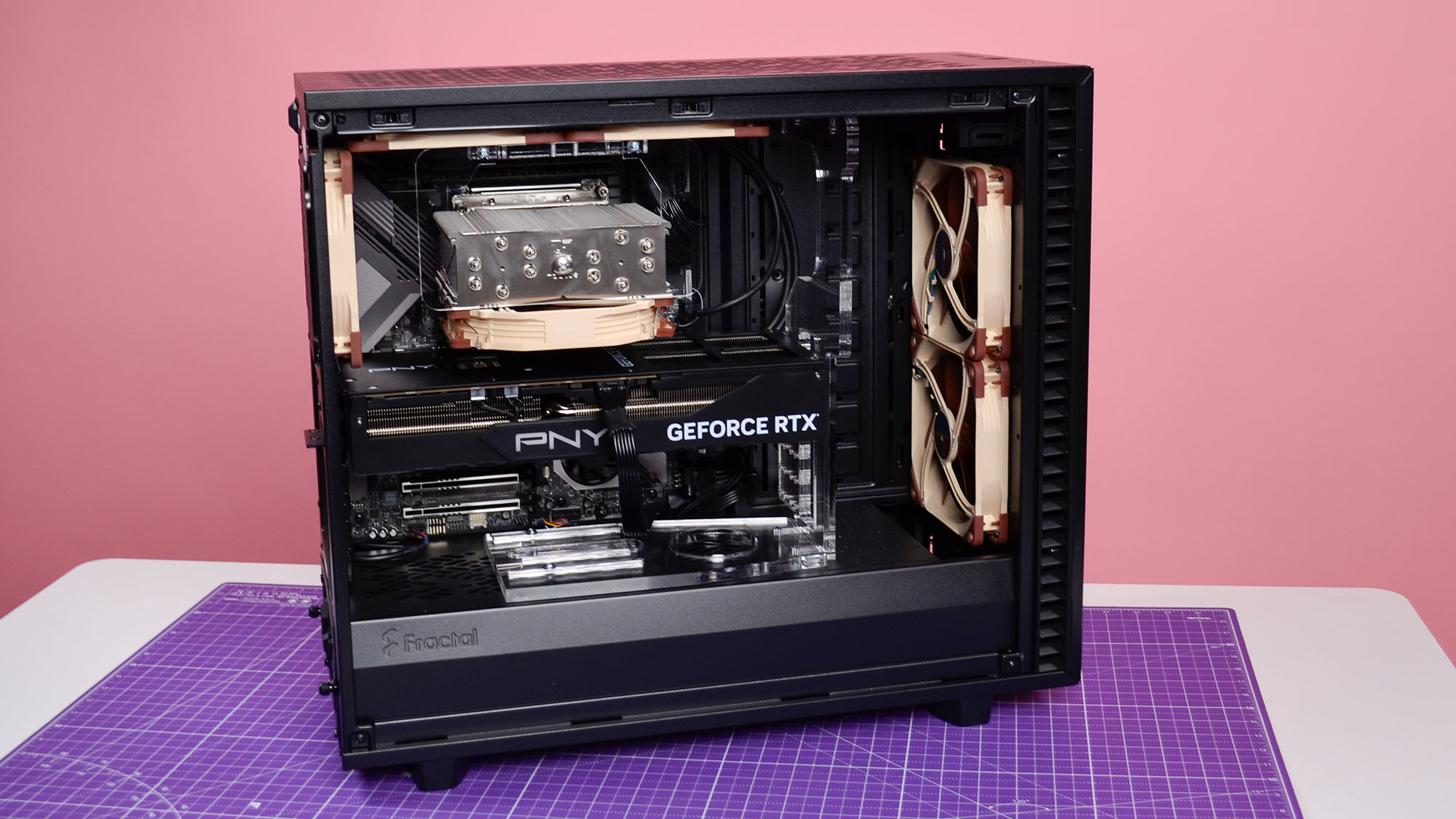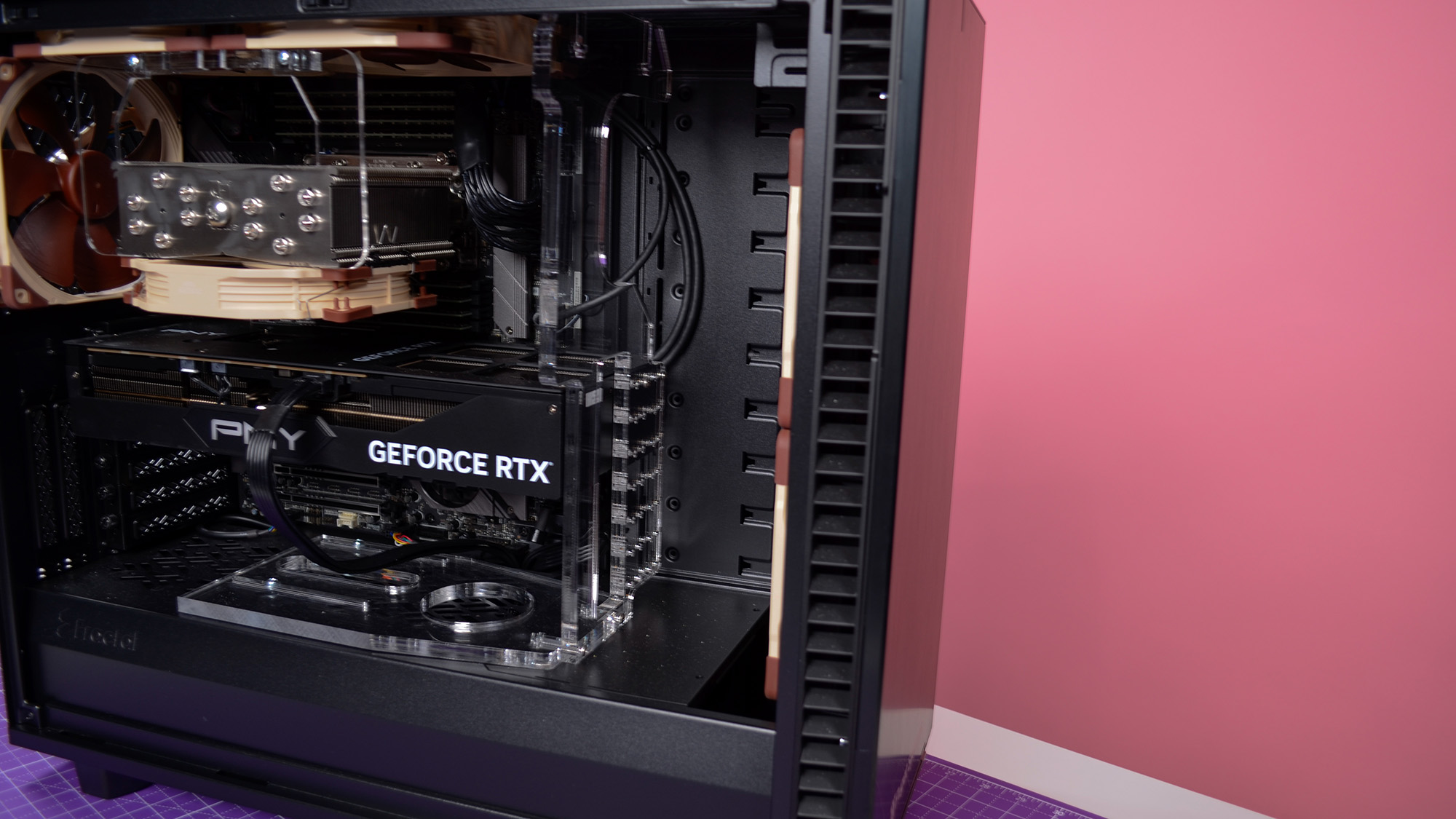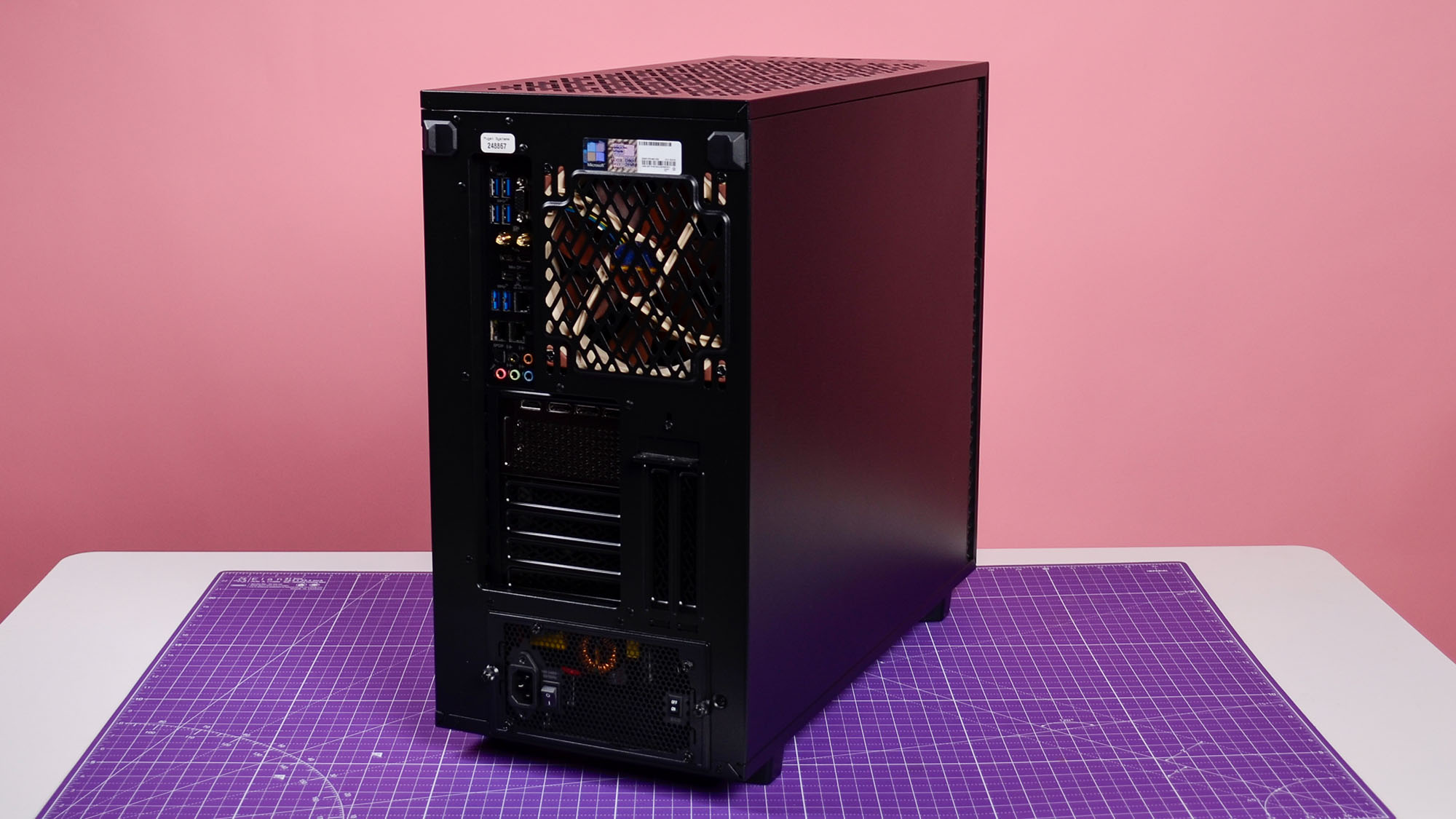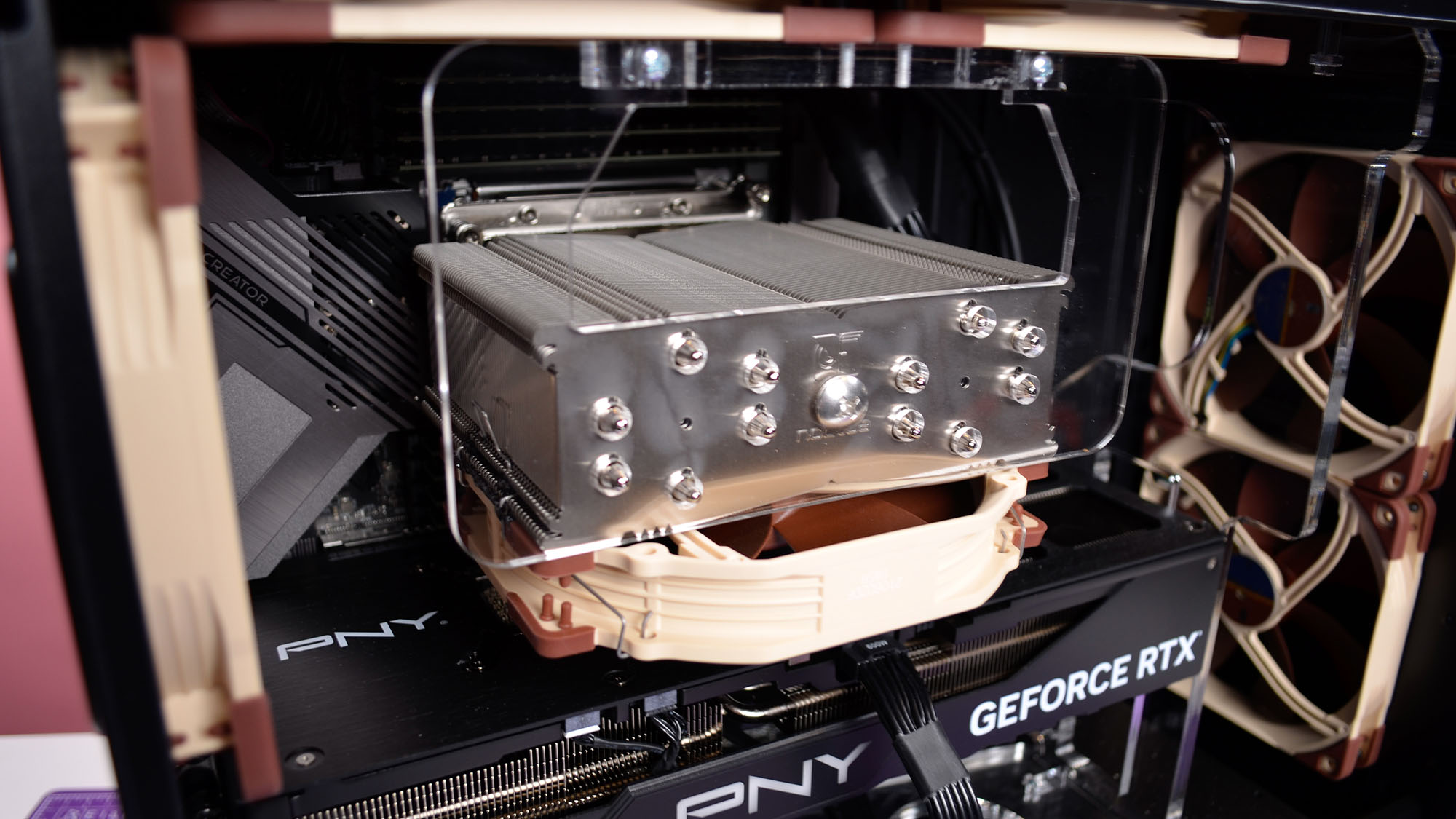Puget Systems Workstation review: a true Mac Pro competitor
Puget Systems Workstation: Two-minute review
The Puget System workstation PC is a tough product to review in a traditional sense, since there's very little on the market to really compare it to outside of enterprise channels other than the Mac Pro, but there is no doubt that when it comes to professional workstations running anything other than macOS, Puget Systems can build you exactly what you need. You'll just have to pay for the privilege.
The unit I received in for review featured an AMD Threadripper Pro 5975WX 32-core CPU, which isn't even the latest workstation chip available, and still cost close to $11,500 in the US. Playing around with the part configurator, you can build a system that can cost you close to $40,000, but which will likely have more computing power than just about anyone in or out of industry would ever really need. But hey, if investors are lining up to sign the check, there are worse systems to splurge on, believe me.
We've tested many of the best workstations out there, and in terms of performance, you'll get a PC that's only as good as its parts. Fortunately, the Puget Systems workstation has a huge assortment of parts to choose from, both mainstream and pro-channel components like Nvidia Ada workstation GPUs. This also means that a Puget Systems workstation can range in price from eye-watering to bank-account-shattering.
The lowest configurable system I was able to put together using Puget Systems' online builder costs $3,132.26, while the most devil-may-care configuration I was able to build ran to just under $61,000, and quite frankly it could beat the Mac Pro into the ground through the sheer weight of its specs, including multiple 48GB Nvidia RTX 6000 Ada cards and 1TB DDR5-5600 REG ECC.
Understandably, that was not the system Puget Systems sent me for review. That system, which featured an AMD Threadripper Pro WRX80 ATX board with a Threadripper Pro 5975WX 32-core processor, 256GB DDR4-3200 REG ECC memory, an Nvidia RTX 4090 GPU, a 4TB Sabrent 4TB Rocket 4 Plus SSD, Noctua CPU cooling fans and a Fractal Design Define 7 case came out to $10,569.12, not including shipping.
For the same price, I could get a Mac Pro with M2 Ultra with 24-core CPU, 76-core GPU, and 32-core neural engine, 192GB unified memory, and 4TB SSD storage in a stainless steel frame (without $400 wheels), no peripherals, and no preinstalled software for $10,599.
While that Mac Pro configuration is undoubtably solid, that really is as good as it gets right now as far as Mac Pro units go, and we haven't even touched the tip of the iceberg for what Puget Systems is capable of producing. Yes, without question, you will end up paying a serious premium to beat the Mac Pro. But if you're playing with these kinds of table stakes, the kind of workstation you can build with Puget Systems will simply outclass anything that the Mac Pro can provide at this point, especially if you're looking at a workload that isn't easily portable to macOS like machine learning workloads that rely almost exclusively on Nvidia's CUDA.
Ultimately, whatever Apple's Mac Pro can do, so can a Puget Systems workstation, and if you've got a workload that doesn't easily square with the almighty cheese grater, Puget Systems will be able to build you exactly what you need.

Puget Systems Workstation: Price & availability
As a custom workstation builder, Puget Systems PCs can range in price from the more modest AMD Ryzen 7000-series or Intel 13th-gen PCs starting at about $3,000 and going all the way up to an AMD Threadripper Pro 7995WX 96-core monster with 1TB DDR5-5600 REG ECC (8x128GB) memory, three 48GB Nvidia RTX 6000 Ada GPUs, a 25 gigabit PCIe network card, a pair of Micron 15.36TB 7450 Pro NVMe U.3 SSDs (6,800 MB/s read), an additional pair of 8TB NVMe M.2 SSDs rated for 7,000 MB/s read), an Asus 24x DVD-RW SATA drive for the hell of it, a 1600W 80 Plus Platinum PSU, a 360mm AIO CPU cooler, and a Noctua case fans upgrade kit to help cool this beast; all for $60,832.03, built to order, and you can get it in about a month.
In our Mac Pro review, meanwhile, we noted it maxes out at an Apple M2 Ultra with 24-core CPU, 76-core GPU, 32-core neural engine, 192GB unified memory, 8TB SSD storage, additional wheels for the workstation, a magic mouse and magic trackpad, and preinstalled Final Cut Pro and Logic Pro, at a total cost of $12,847.98.
For a lot of folks, especially video editors or musicians, the choice of a Mac Pro will be a foregone conclusion, especially if you're very used to the ecosystem and the workflow from specific Mac-only apps. Many users won't be able to easily connect or port over their workloads to a windows based system, so this might be something of a wistful bit of Windows shopping (or Linux, if you prefer, Ubuntu 22.04 LTS can be preinstalled on a Puget Systems workstation), and if that's you, then you know best what you need.
However, if you're not tied into the macOSphere and you're wondering what you can get beyond the Mac Pro, well, you can get an awful lot, especially if you've got the budget to go big.

Puget Systems Workstation: Specs

Puget Systems Workstation: Design
Where Puget Systems really shows off its work is in the design of its workstations. While all of the parts are sourced from major parts manufacturers like Sabrent, PNY, Noctua, and others, Puget Systems goes further than simply installing your components and calling it a day.
From the transparent plastic braces Puget Systems uses to mount CPU coolers and hold up heavyweight graphics cards to the pristine installation of case fans and cable management, the interior of a Puget Systems workstation is some truly high-quality building.
Even more impressive is the binder Puget Systems sends along with your well-packaged workstation. Not only does it catalog the steps your workstation's technician, who is named in the documentation, takes to assemble your build with individual timestamps for progress, the binder is also full of individual benchmark scores using the latest tools to measure PC performance.
Not only does this help ensure that your workstation arrives in working condition, it also shows that the unit didn't leave the shop without undergoing sufficient testing to make sure it was in good working order.
Moving out from the internals, the exterior of the Define 7 case is more than adequate for a workstation that is meant to get work done rather than it is to look pretty for investors, but you won't need to hide this away when the VCs come by to take a look at your operations.
In terms of assembly and setup, it really is as simple as pulling the Define 7 case package out of the larger Puget Systems box, sliding out the workstation, plugging it in, and pressing power. You might need to provide your own peripherals, but if you've spent this kind of money at this point, you'll already be on the prowl for the best business monitors, best office keyboards, and other office essentials.

Puget Systems Workstation: Performance
Performance is something of a moving target on a Puget Systems workstation since so much is going to depend on the build you select. In my case, the workstation I built was more geared toward matching the Mac Pro in terms of price, rather than trying to go as high up the stack on specs as I could.
Still, I did benchmark the hell out of this system, putting CPU, GPU, and other components through the ringer as well as using this as my main workstation PC for close to two months (thanks to the infinite patience of the Puget Systems team), so I certainly didn't skimp on data, even if your mileage is going to vary quite a bit with different builds.
In terms of CPU performance, the 32-core AMD Threadripper Pro 5975WX certainly chewed through multicore processes, but it lagged behind the best processors on the market currently in single core performance, so I would definitely recommend upping the processor to the newer workstation chips if you're going Threadripper or Xeon.
On the graphics side of things, the Nvidia RTX 4090 made short work of the various GPU benchmarks I ran on it, and in terms of compute, the RTX 4090 is the best graphics card on the consumer market, but you can go much higher into the Ada workstation cards that will absolutely run circles around whatever you're going to get out of a GeForce card.
The Sabrent Rocket 4 PCIe 4.0 NVMe M.2 SSD in the workstation I reviewed was about as fast as you're going to get with PCIe 4.0, and it made content creation much smoother when loading saving data to disk. I was running the best video editing software and photo editor tools, and the 256GB DDR4 RAM, while not the fastest on the market, made sure I had more than enough memory to open as many Photoshop files and Adobe Premiere Pro projects as I wanted without breaking a sweat.
The productivity scores on the Puget Systems workstation were impressive, but this isn't really the kind of workstation you spend a down payment for a house on just to run Office apps. It's good to know you can though.
Finally, putting the Puget Systems workstation through a number of creative workloads, this machine's purpose really shone through. Easily one of the best video editing computers out there, this is the kind of computer build for processing large amounts of media and making something beautiful with it without having to worry too much about slow process times or hanging load screens.
In that regard, the Puget Systems workstation outperformed every other workstation I've ever tested in everything from V-Ray to HandBrake and Photoshop and even down to Lumion 12.5, where it rendered a 30 second 4K@30fps video clip at production quality in about 0.11 fps, finishing the render process in just under two and a half hours, whereas most workstations I test take nearly twice as long.
Given better specs, things would have zipped by even faster, no doubt.
And that, ultimately, is Puget Systems in a nutshell: you can get the level of performance you want, though you'll have to pay for it. Given the current state of enterprise-level investments in technology, this might be a heavier lift than it was back in the heady days of zero interest rates and free money, but if you've got the mind to make a real investment, the Puget Systems workstation is easily one of the best investments you can make.
Should you buy the Puget Systems Workstation?
Buy the Puget Systems workstation if...
Don't buy it if...
- First reviewed January 2024
- Best mobile workstations: Tested, reviewed, rated by us
0 comments:
Post a Comment